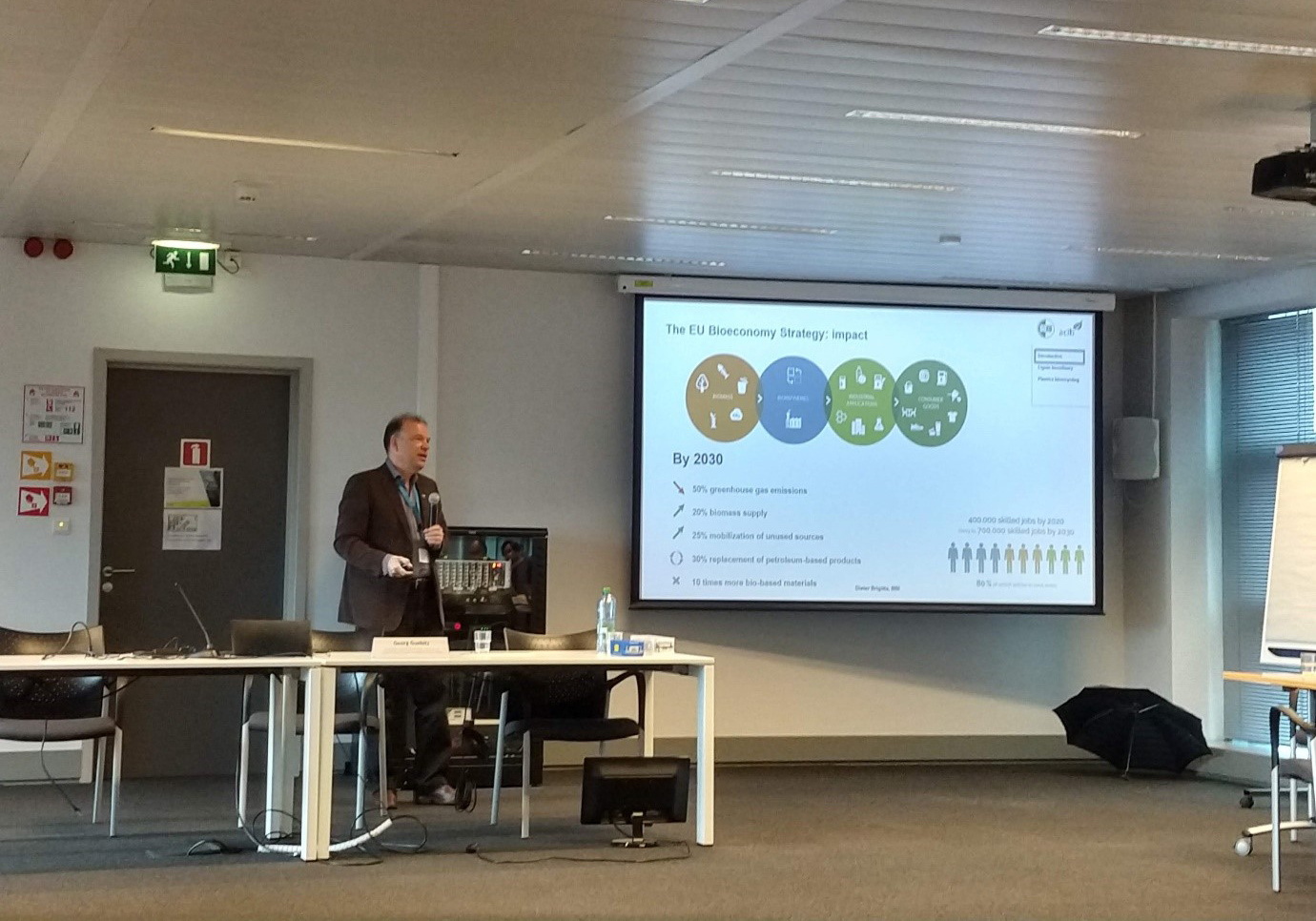Biorefineries provide huge potentials for sustainable production
Lignin biorefineries and biorecycling were the focus of attention, when Professor Georg Gübitz, Head of Department at the University of Natural Resources and Life Sciences (BOKU), Vienna, presented recent trends in sustainable biomass production and biorefineries at the FACCE SURPLUS final conference.

Professor Georg Gübitz presented trends in sustainable biomass production and biorefineries at the FACCE SURPLUS final conference. Two trends in particular were in focus: lignin biorefineries and plastics biorecycling.
Lignin biorefineries
As a forestry side stream available across Europe, there is a huge potential for the use of lignin as a lignocellulosic biomass.
This was one of the main messages, when Professor Georg Gübitz, Head of Department at the University of Natural Resources and Life Sciences (BOKU), Vienna, gave a presentation at the FACCE SURPLUS final conference in Brussels.
- For 40 years, people have been trying to make use of lignin. Lignocellulosic biomasses are abundantly available in most countries and it is furthermore a renewable and carbon neutral material that can be converted into bioenergy. At BOKU, we are focusing specifically on the use of enzymes in biorefineries, Professor Georg Gübitz explained and elaborated:
- Enzymes have the advantage of being highly specific biocatalysts that only perform certain transformations, while leaving other material intact. By the use of enzymes, we can avoid the use of hazardous chemicals and conditions, as enzymes work under milder conditions. Furthermore, enzymes have the advantage of being fully biodegradable as proteins that are only used in catalytic amounts.
- With the enzymatic upgrading of enzymatic upgrading of lignosulfonates, we are able to create products as diverse as fertilizer, bio-adhesive, bio-glue, textiles and paper. The potential for the use of lignin is huge.
Plastics biorecycling.
In his presentation, Professor Georg Gübitz also stressed the possibilities of plastics biorecycling:
- Reduce, Reuse, Recycle and Re-design are the four R’s of plastics. At BOKU, we focus on the last two – and here, enzymes are again at the core of our research. We are working on closing the plastics cycle with the help of enzymes. Through enzymatic hydrolysis of polyesters, we can recycle plastics, blended textiles and we can work with surface activation that can be used for car tires, textiles etc. The possibilities are many in this area as well, Professor Georg Gübitz said, and concluded:
- The challenge, both when it comes to lignin biorefineries and plastics biorecycling, is to create more efficient enzymes.
